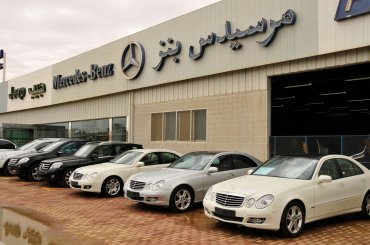
DUBAI, United Arab Emirates – Plummeting automotive sales in the Middle East are stoking fears of a knock-on effect on the regional lubricants market.
Automotive lubricants constitute 65 percent of the Middle Easts total lubricant demand, which is estimated at 1.7 million tons per year, according to Gulf Oil Middle East. The downward trend in auto sales appears set to continue, heaping further pressure on local blenders and finished lubricant marketers battling a downturn in Gulf economies caused by the slide in crude prices.
The regions two largest markets Iran and Saudi Arabia constitute 40 percent and 30 percent of overall lubricant demand, and both markets are under pressure.
U.S. sanctions on Iran have curtailed access to its domestic economy, a fact that hits particularly hard at companies from the United Arab Emirates, both because the U.A.E. is widely acknowledged as the Middle Easts lubricants hub and because traditionally it is a conduit for a significant amount of trade into and out of Iran.
Meanwhile, in Saudi Arabia the fall in oil prices has slowed the pace of economic reform, dampening domestic demand in the Gulfs largest vehicle market. Speaking at the AMEA Bitumen and Base Oil Conference in Dubai Feb. 6, Gulf Oil Deputy General Manager for Projects Sanjay Agarwal said that new passenger car sales in the kingdom fell by 111,000 units or around 20 percent in 2017, based on data from the International Organization of Motor Vehicle Manufacturers. Overall, total new vehicle sales, which includes commercial vehicles, shrank by 264,000 units or just under 9 percent in the Middle East, excluding Iran, over the same period.
Agarwal told delegates that downward pressure on auto sales persisted throughout 2018 and will likely continue this year. “The fall in new automobile sales is creating pressure on [original equipment manufacturers] to offer discounts to push sales. Some measures include extended free service periods, and this is causing a lot of pressure on margins in the sale of genuine oils by blenders like us. Gulf Oil blends genuine oils for OEMs.”
Another consequence of economic contraction is an increase in the amount of counterfeit and substandard lubricants finding their way onto the market. “That harms genuine blenders, but shutting out illicit products is easier said than done,” Agarwal added. “Low entry barriers, low investment requirements [and] availability of technology – the problem [of counterfeiting] is there in most of the countries, but Iraq stands out. Recognizing the potentially disruptive threat has prompted U.A.E. regulators to introduce minimum quality standards for lubricants. These programs are helpful, as effectiveness depends on checks and punitive measures on the defaulters,” he says.
The fall in lubricant demand is not just due to a faltering regional economy. Advances in lubricant technology are also changing consumption habits. Demand is shifting from conventional to semi-synthetic and synthetic lubricants. This benefits blenders in the short-term because the latter categories are more expensive and offer better margins. Synthetics also tend to allow longer drain intervals, though, so in the long-term, they reduce lubricant volumes.
Agarwal said promoting consumer awareness is another challenge for the industry. “The advantages of higher quality lubricants are still not understood by some consumers, so many focus on the cost of the lubricants they use rather than total cost of vehicle ownership.”
The industry faces still other challenges. Several governments in the Gulf have introduced In Country Value initiatives requiring that government projects use lubricants produced by state-owned companies, such as Adnoc and Enoc in the U.A.E. and Oman Oil Co. in Oman, according to Agarwal. A regional standoff between Qatar and neighboring countries has also undermined private sector sentiment across the region.
The difficult operating environment in many markets is stretching distributors who are experiencing delayed or delinquent payments at a time when banks are tightening lending criteria. Even so, there are some grounds for optimism. Saudi Arabia’s Vision 2030 strategy intends to overhaul the country’s economy, paving the way for further liberalization and private sector engagement. Meanwhile, next years Expo 2020 is expected to be bullish for Dubai’s increasingly diversified economy.